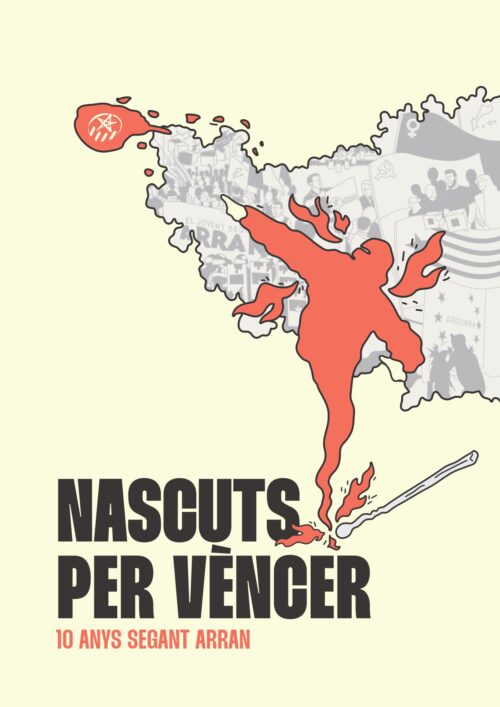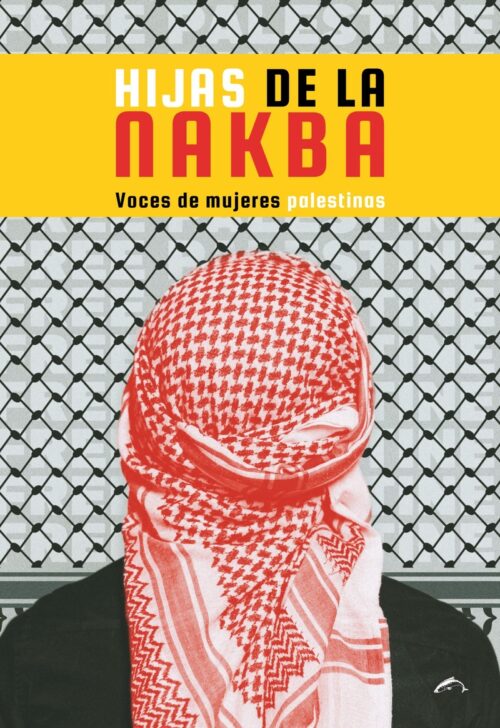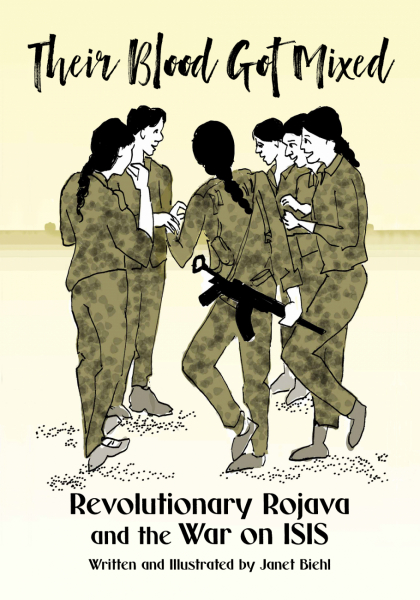-
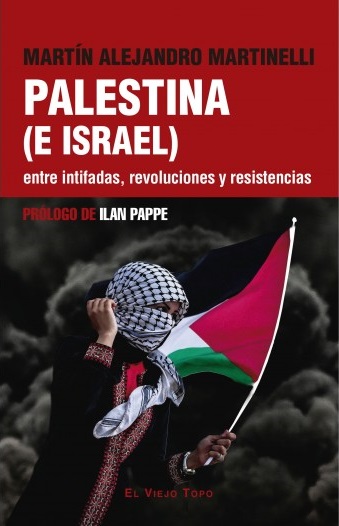 <p>La lucha palestina reúne en sí todas las luchas: por la vida; de clases; étnica; de género; nacional; internacional; por la humanidad… Se inició cuando un pueblo árabe que nunca se había constituído en nación pero sí estaba arraigado en aquellas tierras, vio cómo se le arrebataban sus derechos y sus propiedades por otro pueblo, el israelí, llegado de ultramar, que tampoco se había constituido antes en nación, pero que pronto abrigó la férrea voluntad de hacerlo.</p> <p>Desde ese momento inicial, la Nakba, hasta hoy, el pueblo palestino ha experimentado toda clase de abusos y humillaciones, y ha sido derrotado una y otra vez, ocupado, expropiado de su tierra, deportado o sometido a la violencia colonial, desamparado ante la indiferencia tanto de occidente como del resto de países árabes, o peor aún, con la complicidad de estos. Israel ha perpetrado un acto claro de colonialismo y desposesión contra Palestina, lo que a su vez ha contribuido a despertar una conciencia nacional palestina que reclama sus derechos como estado y lucha por recuperar aquello que perdió.</p> <p>En este texto escrito antes del genocidio que Israel ha cometido en Gaza, Martín A. Martinelli analiza todo el proceso histórico desde sus inicios y describe sus rasgos fundamentales, haciendo hincapié en aspectos que suelen ignorarse en los grandes medios de comunicación, como la naturaleza colonial del dominio israelí y el régimen de apartheid al que está sometido el pueblo palestino en los territorios ocupados, sin ignorar los estallidos de violencia que siempre acompañan a las luchas de liberación y la represión que desatan.</p>
<p>La lucha palestina reúne en sí todas las luchas: por la vida; de clases; étnica; de género; nacional; internacional; por la humanidad… Se inició cuando un pueblo árabe que nunca se había constituído en nación pero sí estaba arraigado en aquellas tierras, vio cómo se le arrebataban sus derechos y sus propiedades por otro pueblo, el israelí, llegado de ultramar, que tampoco se había constituido antes en nación, pero que pronto abrigó la férrea voluntad de hacerlo.</p> <p>Desde ese momento inicial, la Nakba, hasta hoy, el pueblo palestino ha experimentado toda clase de abusos y humillaciones, y ha sido derrotado una y otra vez, ocupado, expropiado de su tierra, deportado o sometido a la violencia colonial, desamparado ante la indiferencia tanto de occidente como del resto de países árabes, o peor aún, con la complicidad de estos. Israel ha perpetrado un acto claro de colonialismo y desposesión contra Palestina, lo que a su vez ha contribuido a despertar una conciencia nacional palestina que reclama sus derechos como estado y lucha por recuperar aquello que perdió.</p> <p>En este texto escrito antes del genocidio que Israel ha cometido en Gaza, Martín A. Martinelli analiza todo el proceso histórico desde sus inicios y describe sus rasgos fundamentales, haciendo hincapié en aspectos que suelen ignorarse en los grandes medios de comunicación, como la naturaleza colonial del dominio israelí y el régimen de apartheid al que está sometido el pueblo palestino en los territorios ocupados, sin ignorar los estallidos de violencia que siempre acompañan a las luchas de liberación y la represión que desatan.</p> -
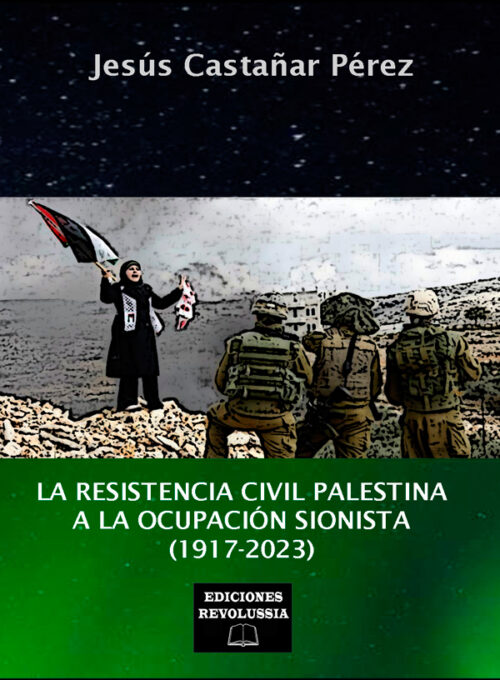 <p>Este libro es un manual para entender el conflicto palestino-israelí, principalmente en sus claves históricas pero también en sus claves sociológicas, geopolíticas y, por su puesto, humanitarias. Tras un prefacio en el que se cuentan las circunstancias en las que hace unos años se escribió el texto y unos necesarios mapas para ubicar geográficamente la zona, se presenta una introducción que avanza buena parte del contexto histórico y que ayuda a resolver muchas de las dudas más comunes sobre el conflicto.</p> <p>Luego el grueso del libro va desgranando cada una de las etapas transcurridas en la zona, siempre haciendo hincapié en las diferentes formas de resistencia noviolenta palestina, hasta llegar al Genocidio de Gaza en 2023. Se añade un capítulo sobre derechos humanos previo al conflicto, y varios anexos: uno con una cronología, otro con un glosario y finalmente otro sobre las claves geopolíticas del último año, que enmarcan el ataque de Israel a Gaza como el culmen de un proceso de apropiación que se produce en un momento determinado.</p>
<p>Este libro es un manual para entender el conflicto palestino-israelí, principalmente en sus claves históricas pero también en sus claves sociológicas, geopolíticas y, por su puesto, humanitarias. Tras un prefacio en el que se cuentan las circunstancias en las que hace unos años se escribió el texto y unos necesarios mapas para ubicar geográficamente la zona, se presenta una introducción que avanza buena parte del contexto histórico y que ayuda a resolver muchas de las dudas más comunes sobre el conflicto.</p> <p>Luego el grueso del libro va desgranando cada una de las etapas transcurridas en la zona, siempre haciendo hincapié en las diferentes formas de resistencia noviolenta palestina, hasta llegar al Genocidio de Gaza en 2023. Se añade un capítulo sobre derechos humanos previo al conflicto, y varios anexos: uno con una cronología, otro con un glosario y finalmente otro sobre las claves geopolíticas del último año, que enmarcan el ataque de Israel a Gaza como el culmen de un proceso de apropiación que se produce en un momento determinado.</p> -
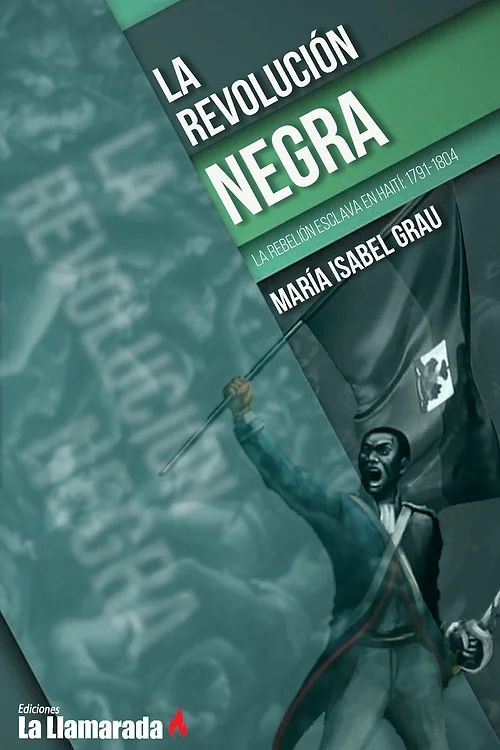 <p>Haití es el país más pobre de América Latina, ¿Qué más sabemos de Haití? ¿Por qué no sabemos nada más? En 1804, el pueblo de una pequeña isla del caribe, Saint Domingue, se declaró independiente de Francia y dejó de ser una colonia, convirtiéndose en la primera nación políticamente independiente de América Latina.</p> <p>Dirigida por Toussaint l’Ouverture y Jean Jacques Dessalines, la revolución de Haití —cuyos inicios son las insurrecciones de negros y mulatos— comenzó siendo una rebelión de esclavos que luchaban por su libertad y se transformó en una guerra por la independencia, en la que un ejército popular de exesclavos negros se enfrentó a los ejércitos español e ingles, y derrotó al ejército de Napoleón Bonaparte.</p> <p>Conocer los acontecimientos de “la revolución negra” es indispensable para recuperar la conexión entre la miseria actual de Haití y el proceso de expropiación que se desarrolla desde el siglo XV en adelante.</p>
<p>Haití es el país más pobre de América Latina, ¿Qué más sabemos de Haití? ¿Por qué no sabemos nada más? En 1804, el pueblo de una pequeña isla del caribe, Saint Domingue, se declaró independiente de Francia y dejó de ser una colonia, convirtiéndose en la primera nación políticamente independiente de América Latina.</p> <p>Dirigida por Toussaint l’Ouverture y Jean Jacques Dessalines, la revolución de Haití —cuyos inicios son las insurrecciones de negros y mulatos— comenzó siendo una rebelión de esclavos que luchaban por su libertad y se transformó en una guerra por la independencia, en la que un ejército popular de exesclavos negros se enfrentó a los ejércitos español e ingles, y derrotó al ejército de Napoleón Bonaparte.</p> <p>Conocer los acontecimientos de “la revolución negra” es indispensable para recuperar la conexión entre la miseria actual de Haití y el proceso de expropiación que se desarrolla desde el siglo XV en adelante.</p> -
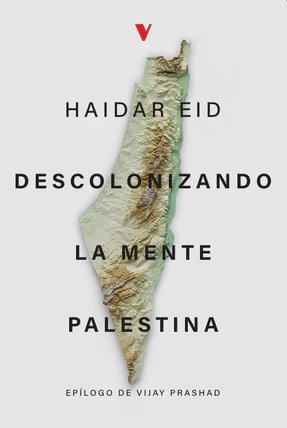 <p>«Estoy de pie sobre las ruinas de una casa en la ciudad de Gaza, oteando el horizonte». Estas son las palabras iniciales de este libro, finalizado mediante mensajes de voz mientras Gaza, donde vive el autor, está siendo aniquilada. Descolonizar la mente palestina no trata del último ataque israelí sobre Gaza. Es una crítica aguda a los Acuerdos de Oslo, a los territorios creados por el imperialismo en nombre de la solución de los dos Estados. También es un texto, escrito a quemarropa, sobre la folklorización de la lucha y la emancipación palestinas, que se han convertido en una conducta habitual por parte de las organizaciones históricas que luchan por la liberación de Palestina.</p> <p>Haidar Eid se basa en la obra de Edward Said, a quien los palestinos aprecian por su implacable crítica de su situación, para hacer un llamamiento por un cambio de conciencia. Vislumbra, desde las ruinas de Gaza, un nuevo período de amenaza sin precedentes sobre la cultura, la identidad y el futuro del pueblo palestino.</p>
<p>«Estoy de pie sobre las ruinas de una casa en la ciudad de Gaza, oteando el horizonte». Estas son las palabras iniciales de este libro, finalizado mediante mensajes de voz mientras Gaza, donde vive el autor, está siendo aniquilada. Descolonizar la mente palestina no trata del último ataque israelí sobre Gaza. Es una crítica aguda a los Acuerdos de Oslo, a los territorios creados por el imperialismo en nombre de la solución de los dos Estados. También es un texto, escrito a quemarropa, sobre la folklorización de la lucha y la emancipación palestinas, que se han convertido en una conducta habitual por parte de las organizaciones históricas que luchan por la liberación de Palestina.</p> <p>Haidar Eid se basa en la obra de Edward Said, a quien los palestinos aprecian por su implacable crítica de su situación, para hacer un llamamiento por un cambio de conciencia. Vislumbra, desde las ruinas de Gaza, un nuevo período de amenaza sin precedentes sobre la cultura, la identidad y el futuro del pueblo palestino.</p> -
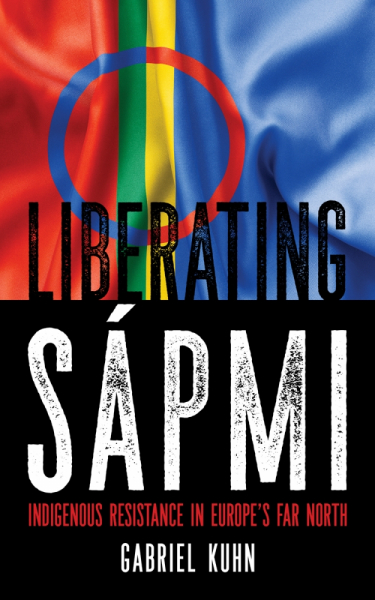 <p>The Sámi, who have inhabited Europe’s far north for thousands of years, are often referred to as the continent’s “forgotten people.” With Sápmi, their traditional homeland, divided between four nation-states—Norway, Sweden, Finland, and Russia—the Sámi have experienced the profound oppression and discrimination that characterize the fate of indigenous people worldwide: their lands have been confiscated, their beliefs and values attacked, their communities and families torn apart. Yet the Sámi have shown incredible resilience, defending their identity and their territories and retaining an important social and ecological voice—even if many, progressives and leftists included, refuse to listen.</p> <p><em>Liberating Sápmi</em> is a stunning journey through Sápmi and includes in-depth interviews with Sámi artists, activists, and scholars boldly standing up for the rights of their people. In this beautifully illustrated work, Gabriel Kuhn, author of over a dozen books and our most fascinating interpreter of global social justice movements, aims to raise awareness of the ongoing fight of the Sámi for justice and self-determination.</p> <p>The first accessible English-language introduction to the history of the Sámi people and the first account that focuses on their political resistance, this provocative work gives irrefutable evidence of the important role the Sámi play in the resistance of indigenous people against an economic and political system whose power to destroy all life on earth has reached a scale unprecedented in the history of humanity. The book contains interviews with Mari Boine, Harald Gaski, Ann-Kristin Håkansson, Aslak Holmberg, Maxida Märak, Stefan Mikaelsson, May-Britt Öhman, Synnøve Persen, Øyvind Ravna, Niillas Somby, Anders Sunna, and Suvi West.</p>
<p>The Sámi, who have inhabited Europe’s far north for thousands of years, are often referred to as the continent’s “forgotten people.” With Sápmi, their traditional homeland, divided between four nation-states—Norway, Sweden, Finland, and Russia—the Sámi have experienced the profound oppression and discrimination that characterize the fate of indigenous people worldwide: their lands have been confiscated, their beliefs and values attacked, their communities and families torn apart. Yet the Sámi have shown incredible resilience, defending their identity and their territories and retaining an important social and ecological voice—even if many, progressives and leftists included, refuse to listen.</p> <p><em>Liberating Sápmi</em> is a stunning journey through Sápmi and includes in-depth interviews with Sámi artists, activists, and scholars boldly standing up for the rights of their people. In this beautifully illustrated work, Gabriel Kuhn, author of over a dozen books and our most fascinating interpreter of global social justice movements, aims to raise awareness of the ongoing fight of the Sámi for justice and self-determination.</p> <p>The first accessible English-language introduction to the history of the Sámi people and the first account that focuses on their political resistance, this provocative work gives irrefutable evidence of the important role the Sámi play in the resistance of indigenous people against an economic and political system whose power to destroy all life on earth has reached a scale unprecedented in the history of humanity. The book contains interviews with Mari Boine, Harald Gaski, Ann-Kristin Håkansson, Aslak Holmberg, Maxida Märak, Stefan Mikaelsson, May-Britt Öhman, Synnøve Persen, Øyvind Ravna, Niillas Somby, Anders Sunna, and Suvi West.</p> -
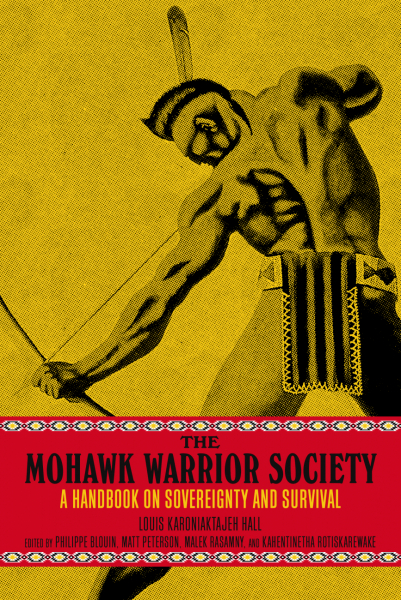 <p>The first collection of its kind, this anthology by members of the Mohawk Warrior Society uncovers a hidden history and paints a bold portrait of the spectacular experience of Kanien'kehá:ka survival and self-defense. Providing extensive documentation, context, and analysis, the book features foundational writings by prolific visual artist and polemicist Louis Karoniaktajeh Hall (1918–1993)—such as his landmark 1979 pamphlet <em>The Warrior’s Handbook</em>, as well as selections of his pioneering artwork.</p> <p>This book contains new oral history by key figures of the Rotisken'rhakéhte's revival in the 1970s and tells the story of the Warriors’ famous flag, their armed occupation of Ganienkeh in 1974, and the role of their constitution, the Great Peace, in guiding their commitment to freedom and independence. We hear directly the story of how the Kanien'kehá:ka Longhouse became one the most militant resistance groups in North America, gaining international attention with the Oka Crisis of 1990.</p> <p>This autohistory of the Rotisken'rhakéhte is complemented by a Mohawk history timeline from colonization to the present, a glossary of Mohawk political philosophy, and a new map of Iroquoia in Mohawk language. At last, the Mohawk Warriors can tell their own story with their own voices, and to serve as an example and inspiration for future generations struggling against the environmental, cultural, and social devastation cast upon the modern world.</p>
<p>The first collection of its kind, this anthology by members of the Mohawk Warrior Society uncovers a hidden history and paints a bold portrait of the spectacular experience of Kanien'kehá:ka survival and self-defense. Providing extensive documentation, context, and analysis, the book features foundational writings by prolific visual artist and polemicist Louis Karoniaktajeh Hall (1918–1993)—such as his landmark 1979 pamphlet <em>The Warrior’s Handbook</em>, as well as selections of his pioneering artwork.</p> <p>This book contains new oral history by key figures of the Rotisken'rhakéhte's revival in the 1970s and tells the story of the Warriors’ famous flag, their armed occupation of Ganienkeh in 1974, and the role of their constitution, the Great Peace, in guiding their commitment to freedom and independence. We hear directly the story of how the Kanien'kehá:ka Longhouse became one the most militant resistance groups in North America, gaining international attention with the Oka Crisis of 1990.</p> <p>This autohistory of the Rotisken'rhakéhte is complemented by a Mohawk history timeline from colonization to the present, a glossary of Mohawk political philosophy, and a new map of Iroquoia in Mohawk language. At last, the Mohawk Warriors can tell their own story with their own voices, and to serve as an example and inspiration for future generations struggling against the environmental, cultural, and social devastation cast upon the modern world.</p> -
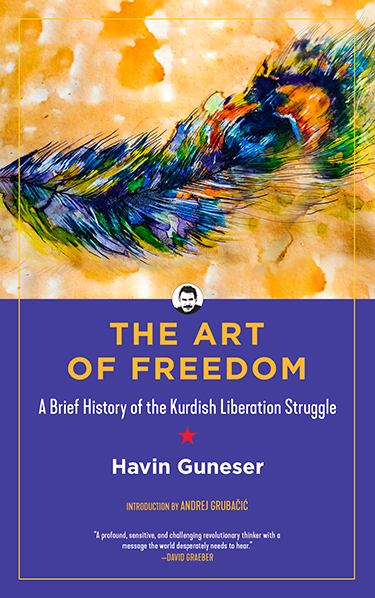 <p>The revolution in Rojava captured the imagination of the left, sparking a worldwide interest in the Kurdish Freedom Movement. <em>The Art of Freedom</em> demonstrates that this explosive movement is firmly rooted in several decades of organized struggle.</p> <p>In 2018, one of the most important spokespersons for the struggle of Kurdish Freedom, Havin Guneser, held three groundbreaking seminars on the historical background and guiding ideology of the movement. Much to the chagrin of career academics, the theoretical foundation of the Kurdish Freedom Movement is far too fluid and dynamic to be neatly stuffed into an ivory-tower filing cabinet.</p> <p>A vital introduction to the Kurdish struggle, <em>The Art of Freedom</em> is the first English-language book to deliver a distillation of the ideas and sensibilities that gave rise to the most important political event of the twenty-first century. The book is broken into three sections: “Critique and Self-Critique: The rise of the Kurdish freedom movement from the rubbles of two world wars” provides an accessible explanation of the origins and theoretical foundation of the movement. “The Rebellion of the Oldest Colony: Jineology—the Science of Women” describes the undercurrents and nuances of the Kurdish women’s movement and how they have managed to create the most vibrant and successful feminist movement in the Middle East. “Democratic Confederalism and Democratic Nation: Defense of Society Against Societycide” deals with the attacks on the fabric of society and new concepts beyond national liberation to counter it. Centering on notions of “a shared homeland” and “a nation made up of nations,” these rousing ideas find deep international resonation.</p> <p>Havin Guneser has provided an expansive definition of freedom and democracy and a road map to help usher in a new era of struggle against capitalism, imperialism, and the State.</p>
<p>The revolution in Rojava captured the imagination of the left, sparking a worldwide interest in the Kurdish Freedom Movement. <em>The Art of Freedom</em> demonstrates that this explosive movement is firmly rooted in several decades of organized struggle.</p> <p>In 2018, one of the most important spokespersons for the struggle of Kurdish Freedom, Havin Guneser, held three groundbreaking seminars on the historical background and guiding ideology of the movement. Much to the chagrin of career academics, the theoretical foundation of the Kurdish Freedom Movement is far too fluid and dynamic to be neatly stuffed into an ivory-tower filing cabinet.</p> <p>A vital introduction to the Kurdish struggle, <em>The Art of Freedom</em> is the first English-language book to deliver a distillation of the ideas and sensibilities that gave rise to the most important political event of the twenty-first century. The book is broken into three sections: “Critique and Self-Critique: The rise of the Kurdish freedom movement from the rubbles of two world wars” provides an accessible explanation of the origins and theoretical foundation of the movement. “The Rebellion of the Oldest Colony: Jineology—the Science of Women” describes the undercurrents and nuances of the Kurdish women’s movement and how they have managed to create the most vibrant and successful feminist movement in the Middle East. “Democratic Confederalism and Democratic Nation: Defense of Society Against Societycide” deals with the attacks on the fabric of society and new concepts beyond national liberation to counter it. Centering on notions of “a shared homeland” and “a nation made up of nations,” these rousing ideas find deep international resonation.</p> <p>Havin Guneser has provided an expansive definition of freedom and democracy and a road map to help usher in a new era of struggle against capitalism, imperialism, and the State.</p> -
 <p>«Estic dret sobre les ruïnes d'una casa a la ciutat de Gaza, observant l'horitzó». Aquestes són les paraules inicials d'aquest llibre, finalitzat amb notes de veu mentre Gaza, on viu l'autor, és aniquilada. <em>Descolonitzant la ment palestina</em> no tracta del darrer atac israelià sobre Gaza. És una crítica aguda als Acords d'Oslo, als territoris creats per l'imperialisme en nom de la solució dels dos Estats. També és un text, d’urgència, sobre la folklorització de la lluita i l'emancipació palestines, que han esdevingut una conducta habitual per part de les organitzacions històriques que lluiten per l'alliberament de Palestina.</p> <p>Haidar Eid es basa en l'obra d'Edward Said, a qui els palestins aprecien per la seva crítica implacable de la seva situació, per fer una crida per un canvi de consciència. Albira, des de les ruïnes de Gaza, un nou període d'amenaça sense precedents sobre la cultura, la identitat i el futur del poble palestí.</p>
<p>«Estic dret sobre les ruïnes d'una casa a la ciutat de Gaza, observant l'horitzó». Aquestes són les paraules inicials d'aquest llibre, finalitzat amb notes de veu mentre Gaza, on viu l'autor, és aniquilada. <em>Descolonitzant la ment palestina</em> no tracta del darrer atac israelià sobre Gaza. És una crítica aguda als Acords d'Oslo, als territoris creats per l'imperialisme en nom de la solució dels dos Estats. També és un text, d’urgència, sobre la folklorització de la lluita i l'emancipació palestines, que han esdevingut una conducta habitual per part de les organitzacions històriques que lluiten per l'alliberament de Palestina.</p> <p>Haidar Eid es basa en l'obra d'Edward Said, a qui els palestins aprecien per la seva crítica implacable de la seva situació, per fer una crida per un canvi de consciència. Albira, des de les ruïnes de Gaza, un nou període d'amenaça sense precedents sobre la cultura, la identitat i el futur del poble palestí.</p>



